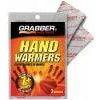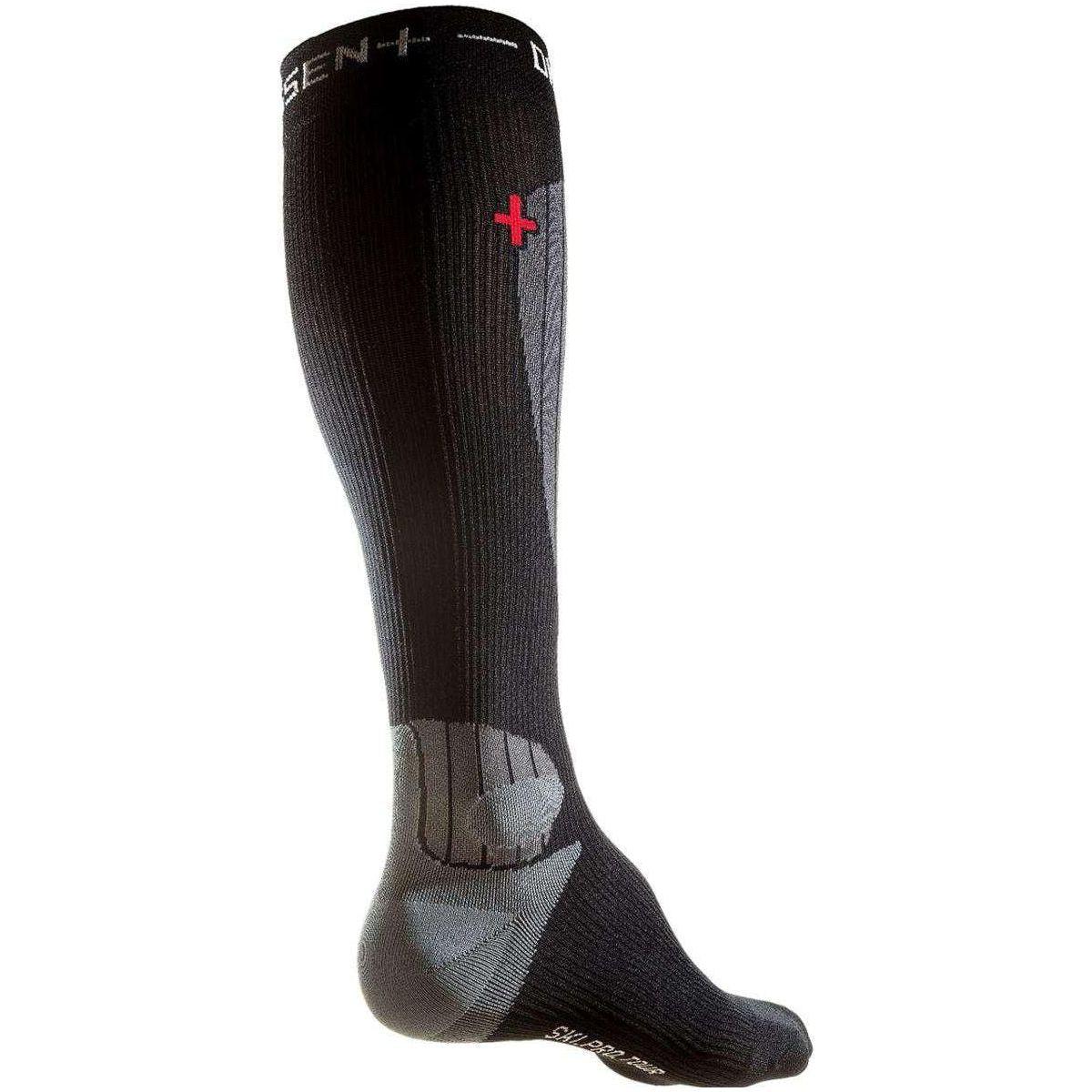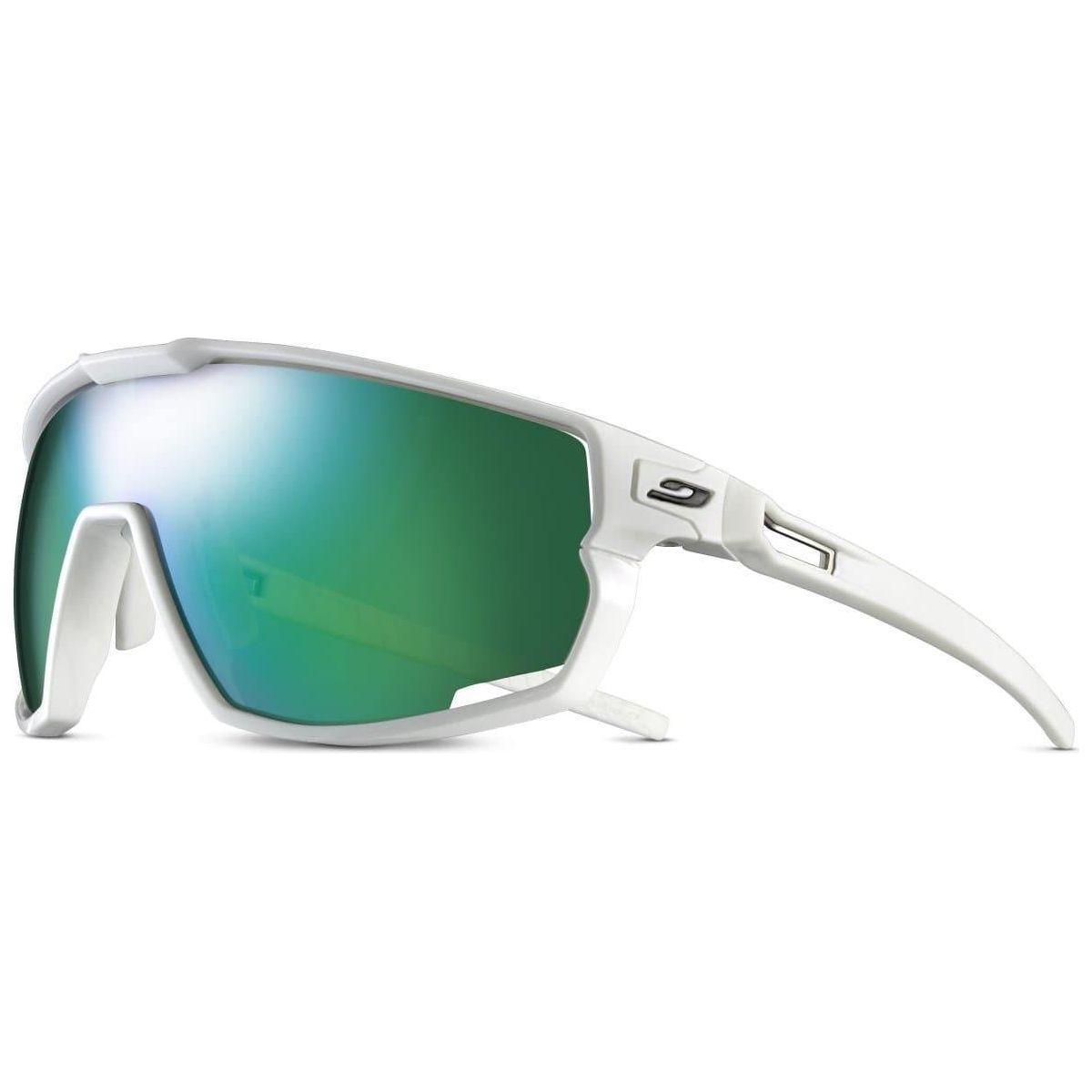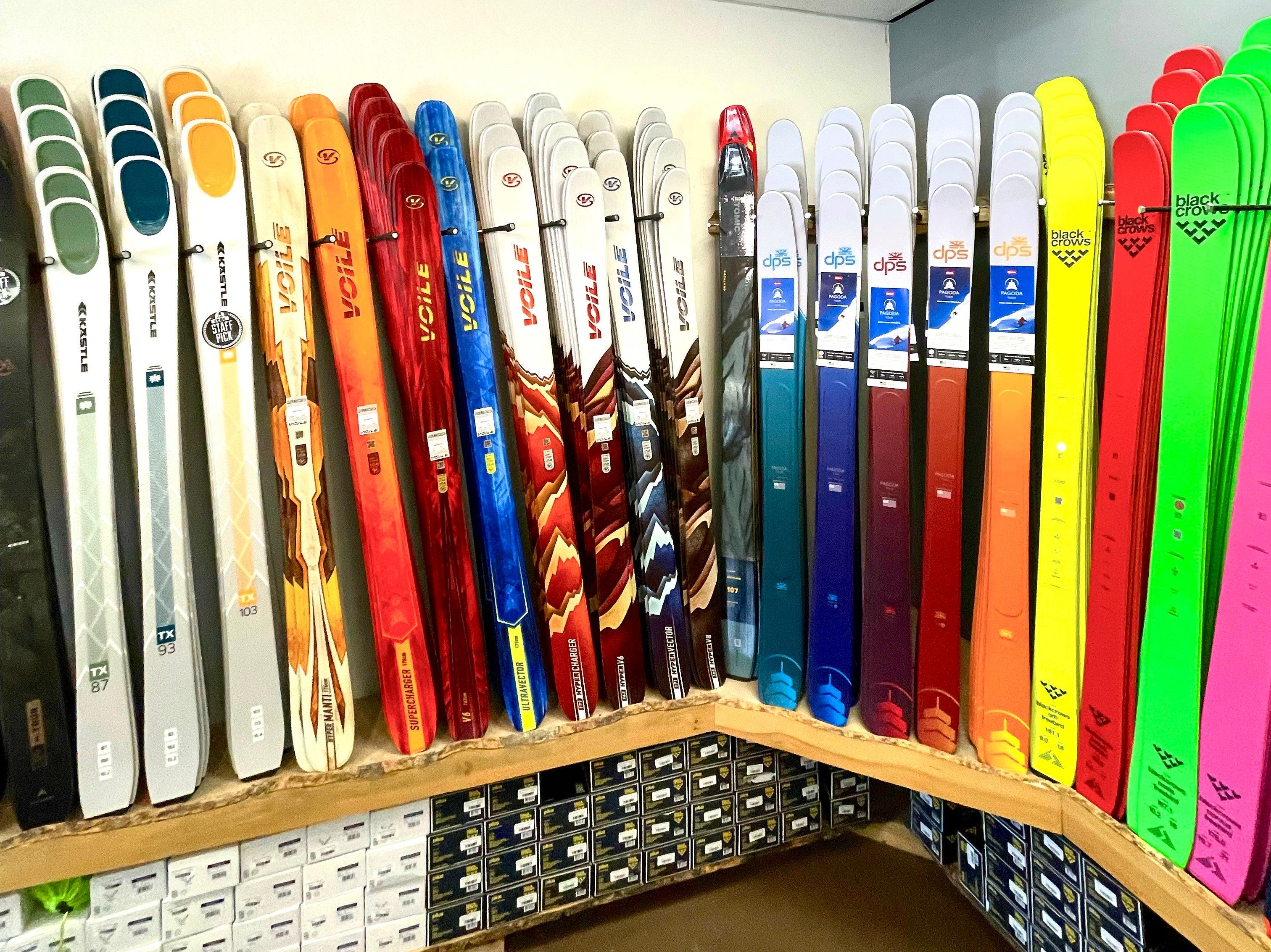The ski touring industry is growing faster and faster. With such growth, gear is increasingly improving in terms of price, performance, and durability. Touring skis have gotten better for edging on hard pack, floating through powder, and flying up the skin track all at once. Everything has gotten easier for backcountry skiing - everything except choosing the right skis!
If you have read our article How to Choose a Ski Touring Setup, you already have some insight into which quiver slot you would like to fill or what skier archetype might suit your needs. There are many different factors that go into choosing a touring ski such as skier height and weight, intended use, ski geometry, and skier preference. This is not an objective process and this article is to serve as a guide for choosing the right ski for you. If you have any questions you can always email us at info@cripplecreekbc.com or make an appointment to come see us in person or online.
Sizing Skis With Height and Weight
In general, we advise our customers to size alpine touring skis a bit shorter than a alpine resort ski. This helps reduce the overall setup weight for uphill travel and allows you to have more maneuverability while skiing in variable backcountry conditions. However, you don't want to size down too much because your weight and height could overpower the ski. While not accounting for certain, more specific quiver slots - the recommended range for an appropriate ski length is from your lips to the top of your head. This means if the ski is standing straight up in front of you with the tail of the ski on the ground, the tips will measure within the range of your lips to the top of your head.
5' | 140-160 cm
5'2" | 145-165 cm
5'4" | 150-170 cm
5'6" | 155-175 cm
5'8" | 160-180 cm
5'10" | 165-185 cm
6' | 170-190 cm
6'2" + | 175-190+ cm
Quiver Slots and Intended Use
One of the important factors for sizing an alpine touring ski is the quiver slot you choose. Quiver slots describe the intended style and use of your alpine touring skis. Powder or Freeride skis are going to be sized differently to Ski Mountaineering tools which will be sized differently to All Mountain skis. In this section, we briefly touch on how ski touring quiver slots relate to ski size. For a more in-depth description on quiver slots, check out our in-depth explanation here. Check out the graphic below to see how quiver slots relate to ski waist measurements. Typically, Race and Fitness skis measure between 60-85 mm. Ski Mountaineering skis will be wider at 75-100 mm. All Mountain skis are considered the most versatile ski width at 85-110 mm. Then Powder and Freeride skis are as big as skis get at 100-120+ mm.
Race Skis
When we say race, we are referencing ski mountaineering racing. Ski mountaineering racing is essentially competitive ski touring. Racers complete a set course of designated up tracks, descents, and transition zones. All race skis come in two lengths ranging from 150 - 161 cm. According to ISMF (International Ski Mountaineering Federation) standards, male racers must ski on planks at least 160 cm in length, while female racers must ski on planks at least 150 cm in length. Race skis are perfect for training and competing at your highest level. If you are looking to be as light as possible and perform to the highest of your ability in ski mountaineering racing, then you'll want to get a pair of race skis. You will feel like your flying up and down the mountain with the freedom of motion and lightweight of a race setup. However, if you want to use touring as a form of exercise and are willing to sacrifice a few 100 grams in exchange for improved durability and downhill performance, we suggest looking to a pair of fitness skis instead. Race skis are 150-161 cm in length and ~65 mm in width.
Thinking about entering a ski mountaineering race? Check out the Grand Traverse Packing List to get an idea of what's required, what to expect, and what to look forward to
Fitness Skis
A fitness ski is perfect for on-piste touring when the main objective is to get exercise. These skis come in a featherweight package but are capable of holding an edge down groomed runs and skiing through the mixed terrain that you might find on the resort. If you race to push your personal limits more than competing against others, we recommend a fitness ski [over a race ski] for their improved downhill performance and durability. Fitness and race skis have a traditional cambered shape to get every bit of effective edge and holding power out of their slender frame. Fitness and race skis are the trail running shoes of the ski touring world: they're light, agile, and energy efficient. A fitness ski will be short and maneuverable, but the extra bit of weight will provided an improved downhill skiing experience [compared to a race ski]. Fitness skis are 160-180 cm in length and 70-80 mm in width.
Ski Mountaineering
All Mountain
Powder and Freeride
Ski Geometry
1) Rocker and Camber
Tip rocker refers to the amount of ski tip that rises off of the snow. This helps with turn initiation and floatation in soft and/or variable snow. With tip rocker, skiers are able maintain a forward stance on the ski without having the tip dive or catch in the snow. Tail rocker works on the same principle as tip rocker, offering ease in turn initiation and release at the end of your turn. Rockered skis pivot more easily and help maintain a controlled position while in deep or variable snow. The more rocker a ski has, the less edge is in contact with the ground, meaning the ski will feel shorter in firmer conditions and maintain less of an effective edge.
Camber refers to the arc underneath your ski when you lay your skis flat on the snow. When the ski is weighted with a skier, the arc disappears distributing energy along the length of the ski. A ski's "pop" is generated by the loading and unloading of the camber through a turn. As a result, the more camber a ski has the more energy potential there is for turning. Cambered skis will be more lively and powerful while turning, maintain a longer effective edge and control.
2) Sidecut and Turning Radius
1. Find your ski length from your height and weight
2. Choose your quiver slot by deciding what skiing you want to do
3. Refine your ski search by fine tuning your desired ski geometry
Brining it All Together
Don't hesitate to shoot us an email, schedule a video call, or call us up with any questions, comments or concerns. We love gear and want to get you into the perfect set up.




